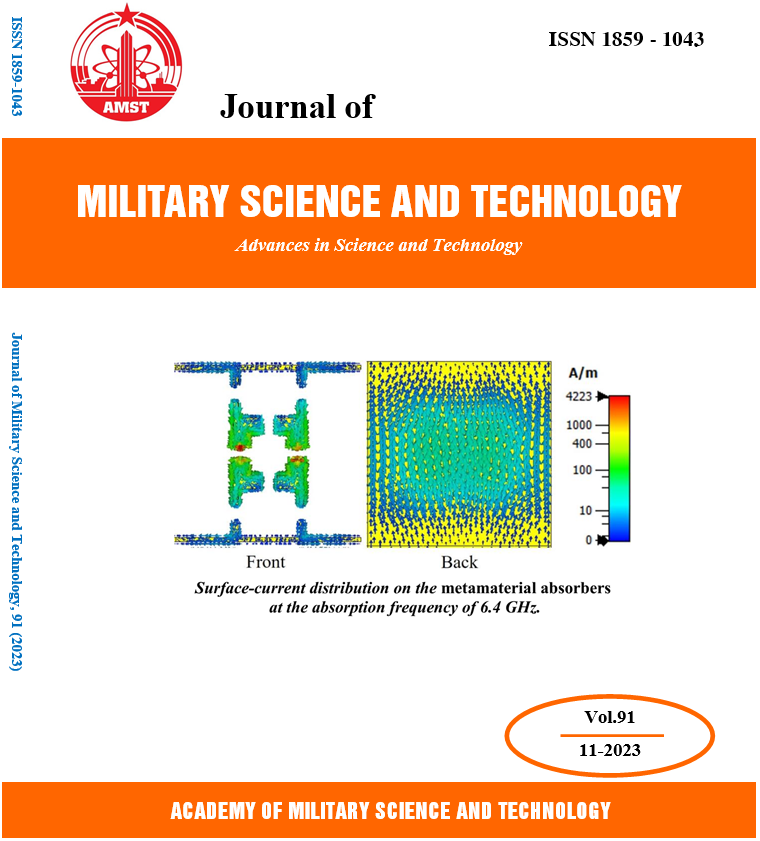Research the explosive train detonation time of the electronic time fuze for the underwater pressure device
502 viewsDOI:
https://doi.org/10.54939/1859-1043.j.mst.91.2023.106-114Keywords:
Electronic time fuze; Underwater pressure device; Explosive train; Detonation time.Abstract
In this paper, using numerical simulation combined with experiment, the detonation time of the explosive train of the electronic time fuze from the signal source to the fuze booster has been determined. The results show that the influence of the transmission line and the connector on the detonation train time is very small, this influence in the design can be ignored. The results after the study are proven experimentally and the experimental results show that the simulation results are reliable and highly applicable. The results of the article are applied to manufacturing and testing electronic time fuze use for the underwater pressure device.
References
[1]. Institute of metal science. "Prospect high tech IMS 2019." Bulgaria (2019).
[2]. Eric Botigan. "Signal and Power Intergrity." Prentice Hall Modern Semiconductor Design Series, Prentice Hall Signal Intergrity Library, third edition, (2021).
[3]. R.D. Cook, D.S. Malkus, M.E. Plesha, R.J. Witt, “Concepts and Applications of Finite Element Analysis”, fourth ed., Wiley, (2001).
[4]. B.P. Sommeijer, “Increasing the real stability boundary of explicit methods”, Computers & Mathematics with Applications 19 (6), pp. 37–49, (1990). DOI: https://doi.org/10.1016/0898-1221(90)90046-M
[5]. C.D. Acosta, C.E. Mejía, “Stabilization of explicit methods for convection diffusion equations by discrete mollification”, Computers & Mathematics with Applications 55 (3), pp. 368–380, (2008). DOI: https://doi.org/10.1016/j.camwa.2007.04.019
[6]. https://www.sharcnet.ca/Software/Ansys/16.2.3/enus/help/wb_sim/ds_ex_mat_jwleos.html.
[7]. ANSYS Inc. ANSYS Workbench User’s Guide, Release R2020.1.







